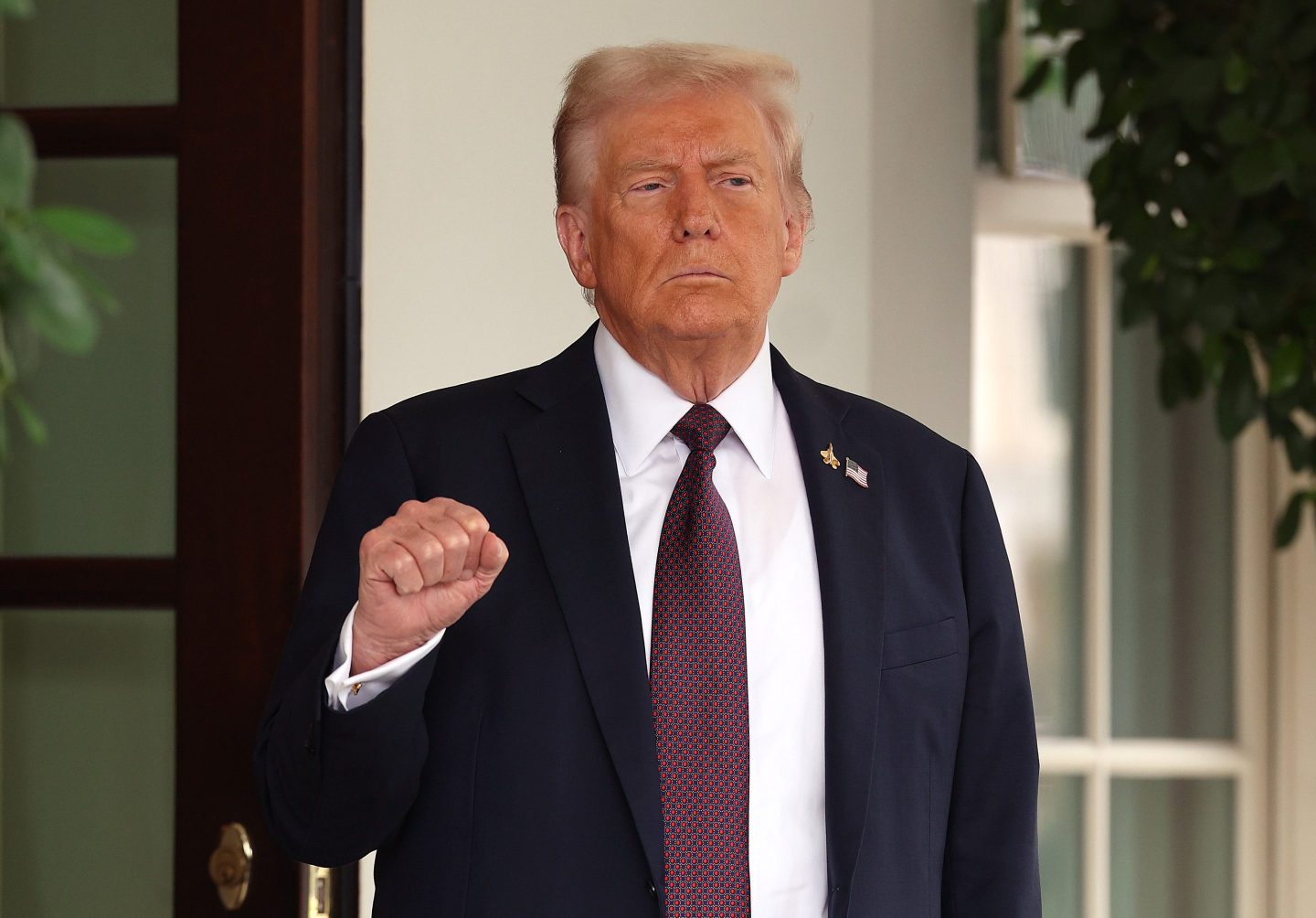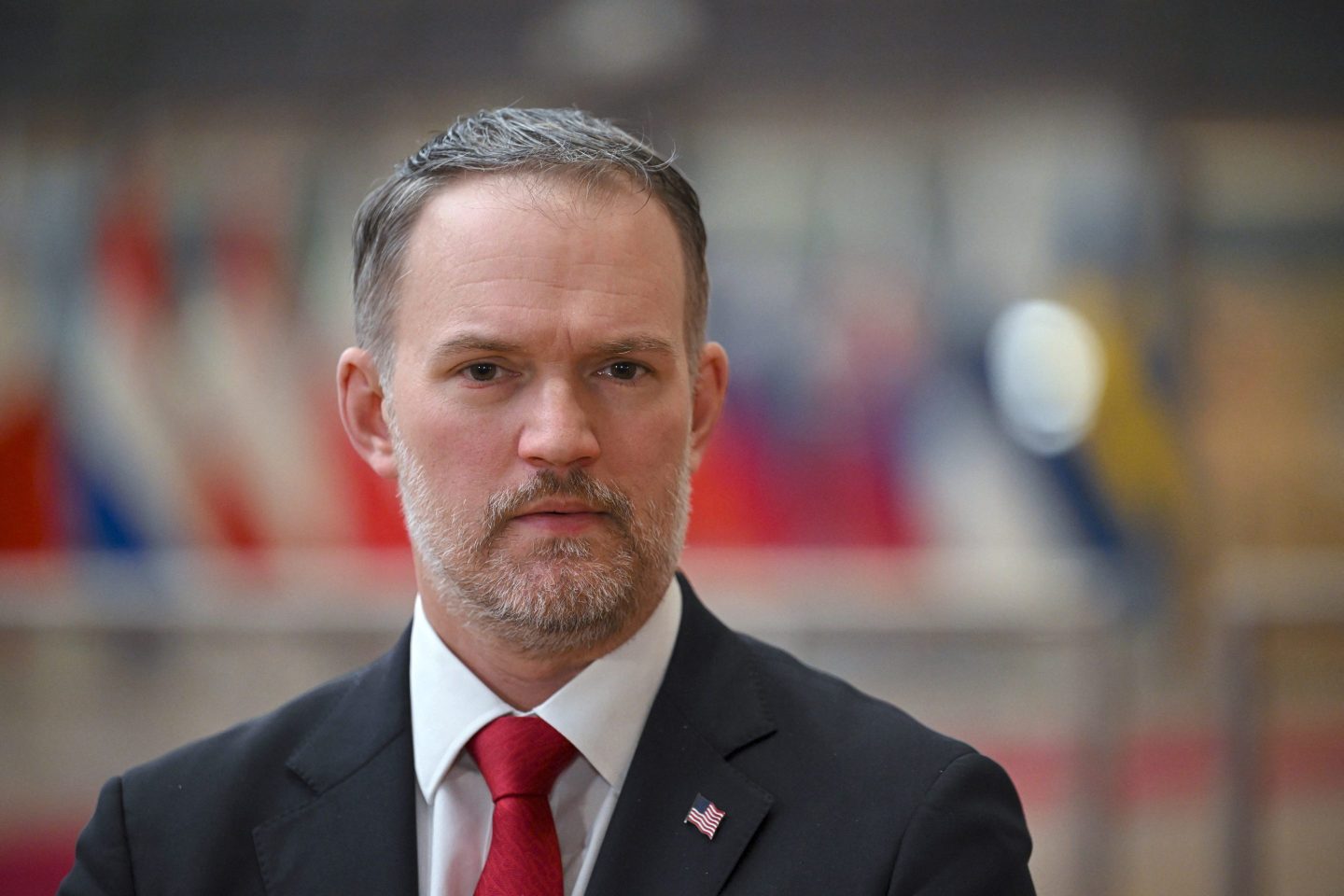President Trump’s tariffs, highly touted as a lever to boost American industry, are now emerging as a substantial tax on business—putting pressure on corporate profits, labor markets, and prices, according to Morgan Stanley’s chief economist. Michael Gapen draws a striking conclusion in his Monday research note, US Economics Weekly: “Tariffs have been a tax on capital, so far.”
In the second quarter of 2025, U.S. corporations largely absorbed the escalating cost of tariffs, according to Gapen’s team, offsetting higher nonlabor costs with reductions in labor costs and profitability rather than passing them directly on to consumers. This is markedly different from the trends observed in 2021 and 2022, a phenomenon called “greedflation” by some, when businesses responded to rising costs by raising prices more than those costs, which led to boosted profits.
Since returning to office, President Trump has expanded “reciprocal tariffs” across major U.S. trading partners, collecting a record $25 billion in July alone—triple the amount from late last year. The Committee for a Responsible Federal Budget (CRFB) reports tariffs are on track to inject $1.3 trillion in new revenue by the end of Trump’s current term and as much as $2.8 trillion through 2034. For fiscal 2025, the take from tariffs has already doubled its typical share, accounting for 2.7% of all federal revenue with projections as high as 5% if current policies persist. This is functioning to date as a tax on capital, Gapen’s team concludes.
The mystery of the 2025 economy
Gapen is wrestling with a question that has been plaguing many other economists, about how 2025’s strong economy doesn’t feel like it, which he calls “the mystery between solid spending data and weak hiring.” He believes it “can be explained by a corporate sector that absorbed the initial cost of tariffs and reduced unit labor costs and profitability rather than raising prices.” Yale management professor Jeff Sonnenfeld wrote for Fortune that CEOs have been privately grumbling about this dynamic for months, concluding that President Trump’s tariffs policy is simply “bad for business.”
Gapen’s thesis, if correct, would also go a long way to explaining the anemic hiring market for entry-level workers and the “job-hugging” phenomenon from the worker perspective, or “hoarding workers” from the company perspective. In short, with the stock market roaring to many record highs off AI exuberance, the guts of the economy have been experiencing some major indigestion brought about by a radically different trade policy. It’s what Federal Reserve Chair Jerome Powell calls a “low-hire, low-fire” economy, and Gapen argues it’s because there’s been a giant, secret new corporate tax put in place by President Trump. But, the economist further argues, it’s not likely to function as a tax over the long haul.
Businesses squeezed, hiring cools
Data shows that, for now, firms have reduced hiring to manage the shock of higher costs from tariffs. Surveys indicate that while roughly two-thirds of businesses affected by tariffs have not yet raised prices, many plan to do so, foreshadowing inflationary pressures in the coming months. The diminished profitability is a direct byproduct of increased unit nonlabor costs—specifically, taxes on production and imports, which include tariffs paid by the nonfinancial sector.
This absorption of tariff expenses has contributed to a puzzling economic divergence: Solid growth in consumer spending actively contrasts with a distinct slowdown in employment growth. Without rapidly rising goods prices, household purchasing power has been maintained, but weaker labor markets have become more visible.
Whereas companies have so far shielded consumers from the brunt of these costs, the threat remains that as the pass-through process continues, price increases will follow, putting further pressure on both households and businesses. Academic studies reject the notion that exporters are significantly absorbing U.S. tariffs through price discounting, as evidenced by largely flat or higher import price indexes from major trading partners like the EU, U.K., Japan, and ASEAN economies. Instead, U.S. companies are bearing the brunt, and the effective tariff rate has spiked—reaching 16% after recent rounds of increases, with customs and excise deposits at the Treasury climbing to record levels.
Historical contrast and future risks
The contrast to earlier years is stark. In 2021 and 2022, when supply chains were disrupted and production costs soared, businesses responded by raising prices and, paradoxically, improving profitability. Now, however, the playbook has changed: Firms are managing costs internally, accepting lower profit margins, and avoiding immediate price hikes.
Looking ahead, Morgan Stanley analysts caution that if companies are not able or willing to pass more tariff costs on to consumers, profit warnings, greater cost control, and even corrections in equity markets could follow. This is a central concern for the Federal Reserve, as the potential for increased downside risk to the labor market grows. Alternatively, if unseen productivity growth emerges—potentially driven by efficiency measures and AI adoption—profitability could rebound without weakening labor markets, sustaining consumer purchasing power.
Inflationary ripples loom
Survey data underscores that tariff pass-through is not yet complete. A Federal Reserve Bank of Richmond poll found about 25% of affected firms intend to raise prices, while between 40% and 50% have already done so and plan further increases. Recent months have brought observable upticks in consumer price inflation for goods exposed to tariffs, and projections by leading analysts suggest annualized core consumer price inflation will approach 3.7% by the end of 2025.
On the ground, the effects are regressive. The Yale Budget Lab estimates tariffs cost families in the second-lowest income tier some $1,700 a year, jumping to $8,100 for those in the top income decile. National-security experts also warn higher costs for hardware and components could dent America’s military readiness, making it “more expensive to meet national defense requirements,” according to the Council on Foreign Relations.
President Trump’s tariff policy—once framed as a pathway to industrial revival—is, in the immediate term, raising nonlabor costs and squeezing margins for American businesses. With the effective tariff rate near record highs, firms are forced into tough decisions about pricing, employment, and profitability. Whether these pressures will eventually cascade into the broader economy through higher consumer prices or persist as a drag on business investment and hiring remains an open question. Fortune senior editor-at-large Shawn Tully and Steve Hanke, the Johns Hopkins economist known as “the money doctor” for his globe-trotting adventures slaying hyperinflation, warned in August that Trump’s tariffs were really a tax in disguise all along: “A giant national sales tax that will hobble U.S. economic growth.”
For this story, Fortune used generative AI to help with an initial draft. An editor verified the accuracy of the information before publishing.










